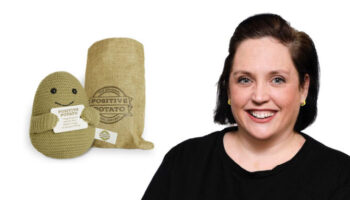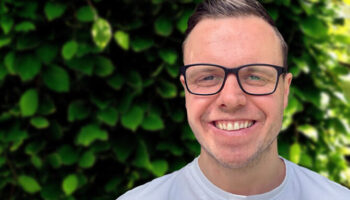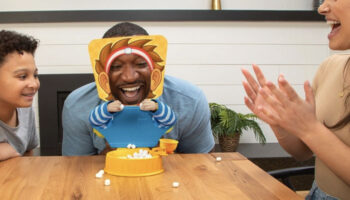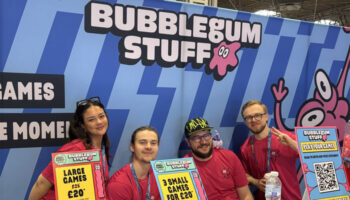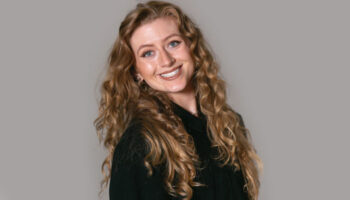WooHoo Workshop’s Courtney Pearson on inventing, inspiration and ideas that arrive in dreams
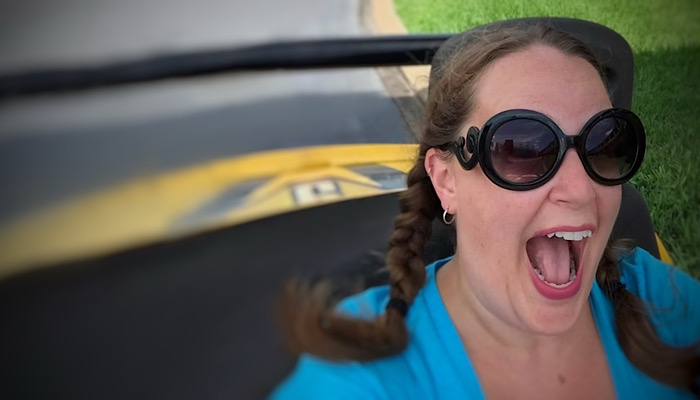
Courtney, great to catch up! To kick us off, how did you find your way into toy and game invention?
It was always about toys for me. My parents like to tell people that I never grew up. My colour-coded Christmas list – when I was too old to have a Christmas list – still included toys. The people at the store would ask them “How old’s your daughter?” and they’d say “…18…21…22”!
I worked at Imaginarium before it was bought by Toys R Us. I went to NYU and got a degree in child psychology and then went to FIT and got a degree in toy design. It’s always been about toys and it’s always been about inventing too.
So you never worked in-house at a toy company?
Well toy design at FIT is designed to get you into toy companies, but I knew from the beginning that I wanted to be an inventor. My internship was with Meyer/Glass Design and I worked at The Obb after I graduated – then I went out on my own.
Did that early internship with Meyer/Glass Design help cement a love for inventing?
Absolutely, it was a phenomenal internship. They didn’t treat me like an intern. I was like any other designer there. I was coming up with concepts, working them through and pitching them. In an eight-week internship, I actually licensed several toys! It’s crazy!
Amazing! And there’s so much history with that studio.
Yes! I knew some of the history of the company when I was there, but I didn’t delve too deep into it. If it could go back now, I’d ask them millions more questions about Marvin Glass.
You mentioned FIT earlier and I always hope that the UK will one day have a few dedicated toy design courses like the States has. How instrumental do you feel that toy design programme was in shaping how you design today?
It was phenomenal. Judy Ellis does a really good job of crafting a well-rounded designer; someone who knows art history, 3D design and even marker rendering. You get a complete rounded education.
The other thing is that it’s a family. As far as I know, there are only four graduates of the programme that are now professional inventors, but there are graduates of the programme in every toy company. It’s a very intense two-year course, so when you meet someone that’s been through it, it’s like you’ve been in the same war! You immediately have a comradery.
Jumping ahead, what prompted your move to go solo and set up WooHoo Workshop?
Well out of university I worked for The Obb, run by the Kislevitz brothers, and I was their last employee. They were going to a new model and so when they closed the studio, that’s when I decided to go out on my own. They didn’t understand games so I wasn’t allowed to invent games there, so to have the freedom to choose what I worked on and who I worked with was great. And because of my time at The Obb and Meyer/Glass, I had the right connections to get started.
Amazing. What was the first item that made it to shelf once you’d gone solo?
It was a game called Flip Cup from Haywire. I remember Alan Roach was so excited about it from the minute I showed him it at Toy Fair. They did a great job with expanded gameplay and the packaging. Haywire went away and the game went with them, but I think it has the potential for a second life at some point.

Is there a through line to the sorts of things you’re inventing? What defines a WooHoo concept?
I used to say that I didn’t invent infant or pre-school items, but that’s not true anymore; I have an infant item with Crayola, so there’s not really a through line. And actually, that’s exactly why I wanted to invent… I didn’t want to get stuck on a brand or in a category genre for my entire career. Inventing lets me create toys and games for infants to adults.
You mentioned having an item out with Crayola – does your approach to design change when working with a brand?
When designing for a brand, you have to look at what you are and aren’t allowed to do with the IP. The interesting thing with my Crayola item is that I showed it to a few people prior to Crayola and they all said “Crayola should do this!” Sometimes there is a natural fit and as soon as Crayola saw it they said “This is great for us”.
I realise we should actually say what your Crayola item is!
Yes! It’s a mess-free finger paint – the EasyClean Finger Paint Station. It’s a unit where parents open the lid, puts paper in, squirts in some paint and then closes the lid. It has a clear vinyl cover so kids can see the paint and move the paint through the cover. It’s a simple idea, but simple ideas are often the hardest ideas!

Super smart! Where did the idea come from?
I saw mothers on social media using saran wrap when their kids were finger painting and that’s what gave me the idea. It sold itself – and I also used a friend’s really cute kid in the sizzle video! She sold it for me!
Handy tip – use cute kids for sizzle videos! I was an ugly toddler, so I would’ve been no use!
Ha! Exactly! You can’t have IR people focusing on how weird a kid looks in a sizzle video! That goes for adults too!
Good to know! Now, what helps you have ideas? Do wish lists help light that initial spark?
It’s rarely wish lists… I read them and keep them in the back of my mind as help for how to pitch something, but I rarely invent slot-driven items. There are enough large invention groups out there having their teams of 10 work on Barbie’s latest horse and I’m not going to be able to compete in that arena.
I go for more out-of-the-box thinking that usually is sparked by something outside of the toy space. I’ll see a cool kitchen tool and that will spark an idea.
I also have a lot of dreams that have gone on to become real toys! I also have a lot of dreams that don’t turn into toys! I have a notebook next to my bed, so I’ll scribble things down in the morning and if it still sounds good in the afternoon, I’ll look at developing it!
Wow! Can you give us an example of a toy that made the leap from your dreams to the toy aisle?
Yes! Back when I worked at The Obb I designed a Dora the Explorer Doll House. It hit the market in 2008 when the market crashed and it was an expensive doll house, so it didn’t do well. But… the toy itself was magical! When you push the chimney, the house splits into four quadrants and flips itself inside out so you can play with it in a number of different ways. That mechanism came to me in a dream.

Incredible! Away from unconscious inspiration, is your workspace important when it comes to fuelling your creativity?
Absolutely. For a long time, I lived and worked from a one bedroom apartment, but I moved into a house in November. I’m in the process of painting my studio all kinds of crazy colours! I’m in my dining room and it’s teal, so it gives you a sense of what I like!

And is that a unicorn’s head on the wall I see?
Yes, I have a unicorn on the wall – and this is the formal room! Where I am now is known for being a creative place – they do everything from zombie walks to Pride parades. I’m excited that now I’m vaccinated, I can go out and explore the world again, because it’s a huge source of creativity for me.
Incredible! Now, looking more broadly, is it a good time to be a solo inventor?
Yes and no! On the negative side, I lost a few contracts because of the issues related to things like shipping, but on the pitching front it’s been wonderful! Not having to cram seeing everyone into New York Toy Fair means I can now work on something and call companies to set up a Zoom. So having greater access to people has been great.
Before I let you go, has your approach to invention changed much over the years?
Well Gary Pyper said this in his Mojo interview from a few months back, but you have to get concepts further along for companies to take it. The days of pitching ideas on a napkin or with an art board are gone, I think.
Lots of companies say to show them stuff early, but I don’t think they mean it! I’ve never sold anything from just a piece of art. In-house teams are over-worked, so if you can bring them something that’s further along the line, I think they look at it more seriously.
Courtney, this has been fun! Thanks for making time. How can folks reach out if they want to catch up with you – and are there any other items that they may not realise came from you?
Actually, for people in the UK, I did Fluffy Go Walkies for Vivid’s AniMagic brand. That was big in the UK and Europe, and I did that while I was at The Obb.

And I can be reached at my website, https://www.woohoo-workshop.com. Or follow me on Instagram @woohoo_toys.
Good stuff! Thanks again Courtney – hopefully catch up again soon!
—
To stay in the loop with the latest news, interviews and features from the world of toy and game design, sign up to our weekly newsletter here





